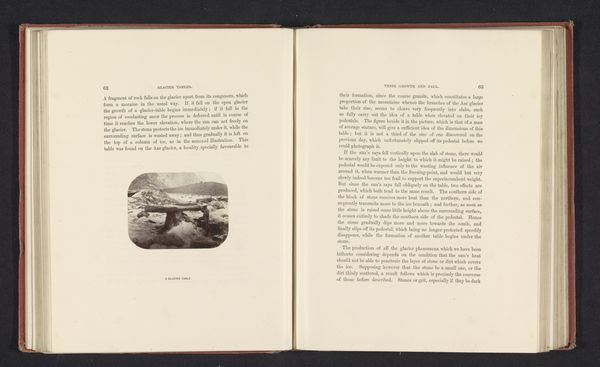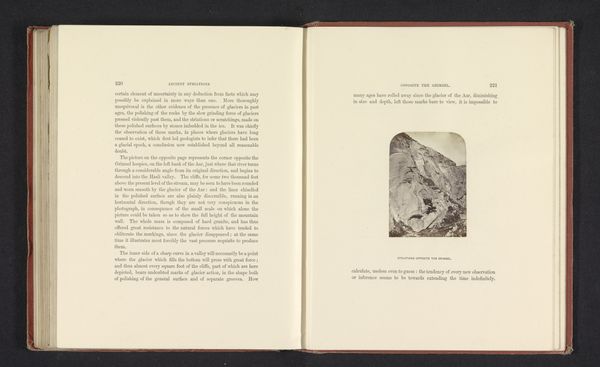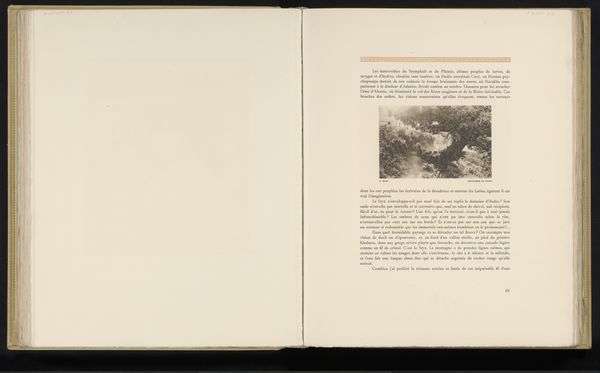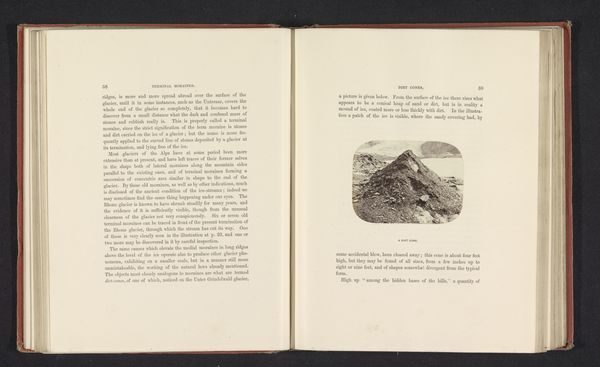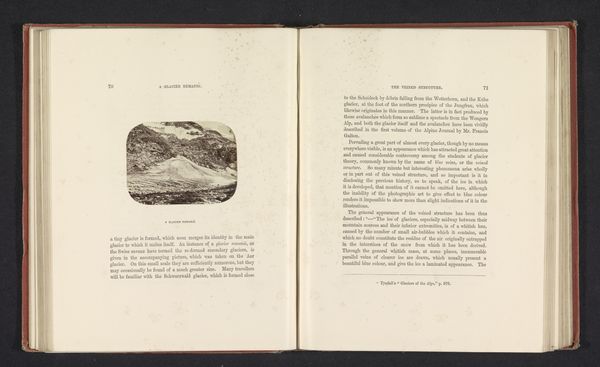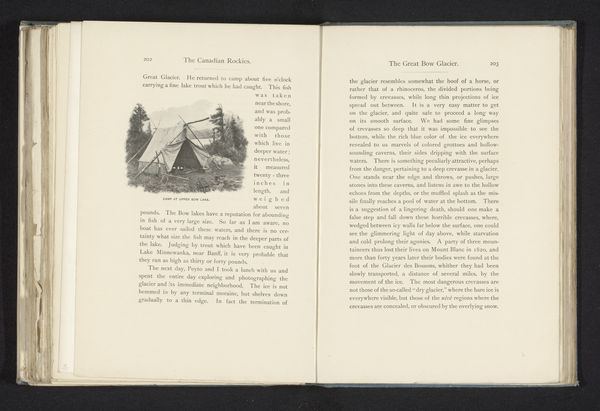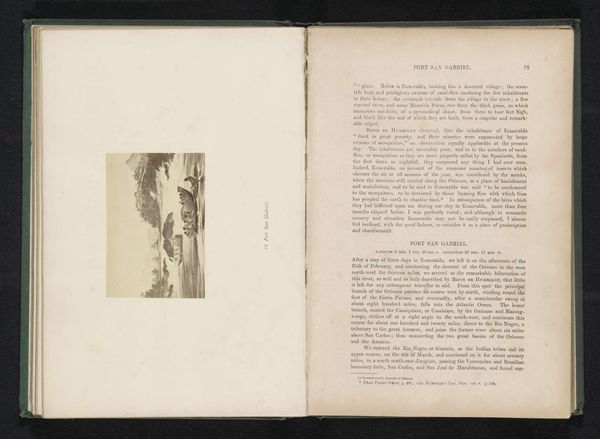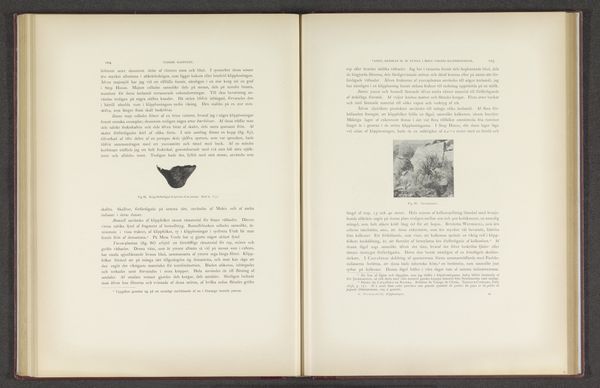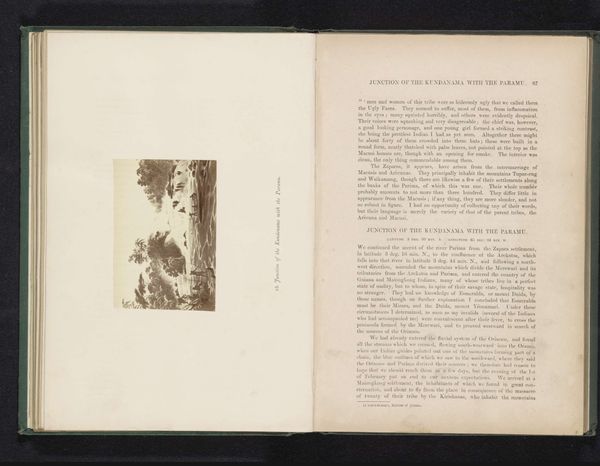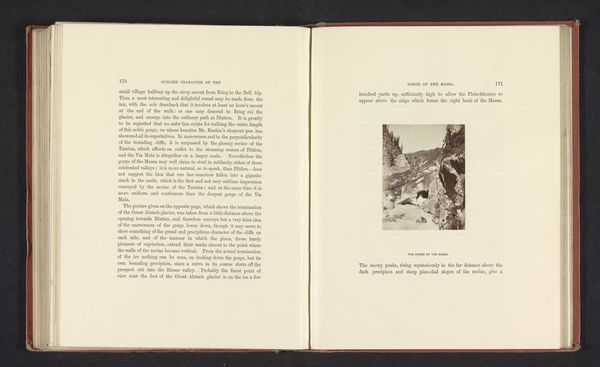
photography, albumen-print
#
script typeface
#
aged paper
#
paperlike
#
landscape
#
personal journal design
#
photography
#
thick font
#
publication mockup
#
script guideline
#
letter paper
#
albumen-print
#
historical font
#
small font
Dimensions: height 70 mm, width 96 mm
Copyright: Rijks Museum: Open Domain
Curator: Looking at this albumen print from before 1866 titled "Final fall of Unter Grindelwald glacier" by Ernest Edwards is fascinating, especially when considering photography's role in shaping perceptions of the natural world. Editor: Absolutely! It's really interesting seeing the glacier framed like this, within the pages of a book. The way the image is presented, surrounded by text, almost makes it feel like a scientific document. I’m struck by how…stark it is. What stands out to you about this work? Curator: What jumps out is the context of viewing this image. We're not just seeing a glacier; we're seeing it as part of a deliberate project of documentation and dissemination. Early photography, especially landscape photography, played a key role in constructing ideas of the sublime, but also in promoting scientific understanding and even tourism. The question here is: who was this book for? What purpose did images like this serve in that particular historical moment? Editor: That makes me think about how photography democratized the viewing of landscapes. Did this photograph serve a different purpose than, say, a painting of the same glacier would have? Curator: Definitely. While paintings often emphasized the romantic aspects of nature, photography, at least initially, carried the weight of scientific accuracy and objectivity. This image could have been used to illustrate geographical or geological studies. But it also brought remote locations into the homes of people who might never have a chance to see them in person, influencing ideas about landscape and travel. Consider the social class of individuals who could afford this book as well. How does their identity and social position influence our perspective of this photograph? Editor: So, it’s less about the individual artistry and more about the societal function of this kind of imagery? Curator: It's both, really. The photographer, Edwards, clearly had artistic choices, but they were also operating within certain social and scientific expectations of what a photograph should be. Examining the image as part of a larger system of knowledge production opens up some interesting questions. Editor: This conversation really shifted my perspective. It is no longer just a picture, but it's a part of this big historical narrative! Curator: Exactly! Hopefully, others viewing this photograph begin thinking of that very idea.
Comments
No comments
Be the first to comment and join the conversation on the ultimate creative platform.
